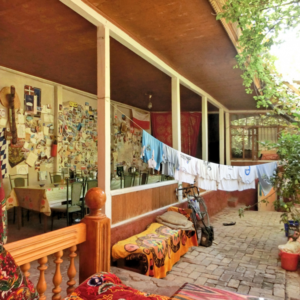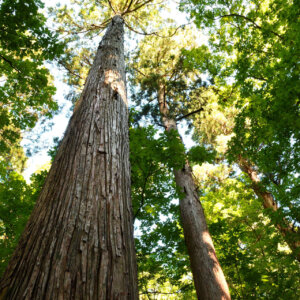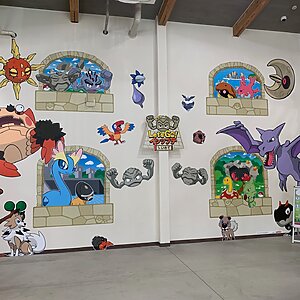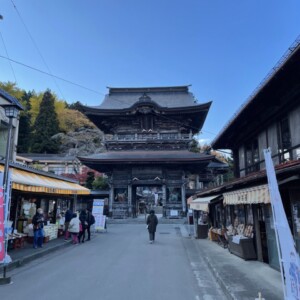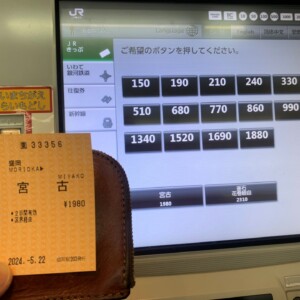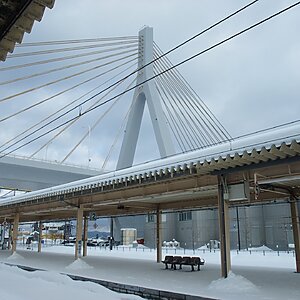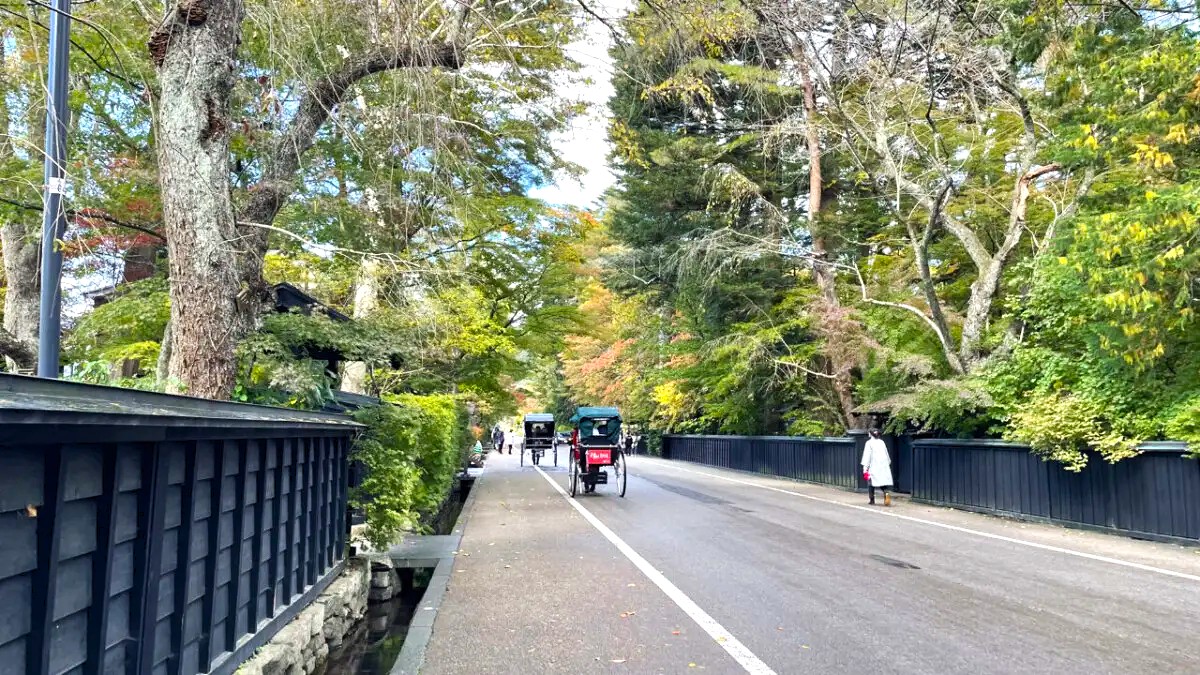
[JR East Pass Trip: First Day 1] On the first day, we went to the samurai residences in Kakunodate in the morning!
table of contents
- 1 Arrived at Morioka Station! What's within a 3km radius?
- 2 We had a late breakfast here, then headed to the first Bikkuri Donkey store, "Bell Boulevard Store."
- 3 A trip on the Komachi Shinkansen from Morioka to Akita City
- 4 Departing from Kakunodate, we head to our destination, Akita City!
- 5 JR East Pass Travel Series
As I wrote in my previous article, on the first day we headed to Akita City
If you simply want to head to Akita City, the easiest way is to take the Tohoku Shinkansen to Morioka and then transfer to the Akita Shinkansen, which will save you time and distance
This time I will also be taking that route, getting off at various stations along the way to my destination
So first I head to Morioka Station on the Tohoku Shinkansen Hayabusa, which departs from Sendai Station at 8:05
Arrived at Morioka Station! What's within a 3km radius?
The ride takes 39 minutes to reach Morioka Station. It's quick
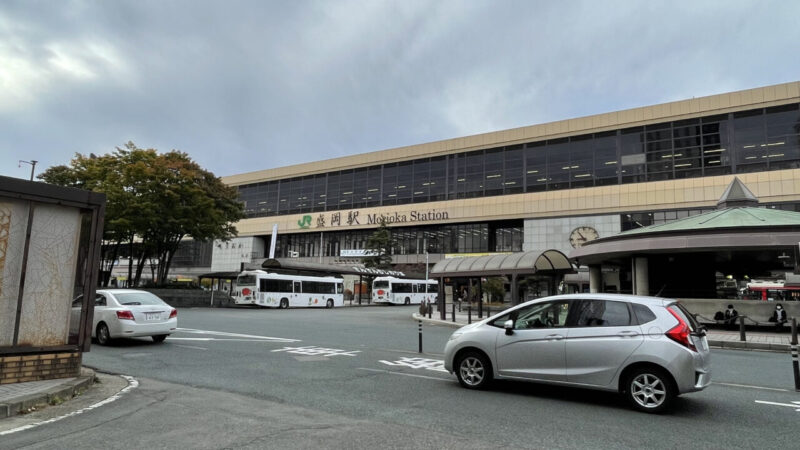
It was around 8:45, and naturally, I thought, "Um, I got there too early."
I try to recall how many years it's been since I've been to Morioka, but I can't remember
I searched on my smartphone for a 3km radius, but the distance to the rear of Morioka Castle ruins was only 2.5km, so I was within range and crossed the Kitakami River and Nakatsugawa River, heading towards the former 90th Bank main building and the Iwate Bank Red Brick Building
Of course, at this time (9am) none of the facilities are open yet, so the main focus is on strolling around

On the way, we saw Mt. Iwate from Kaiun Bridge
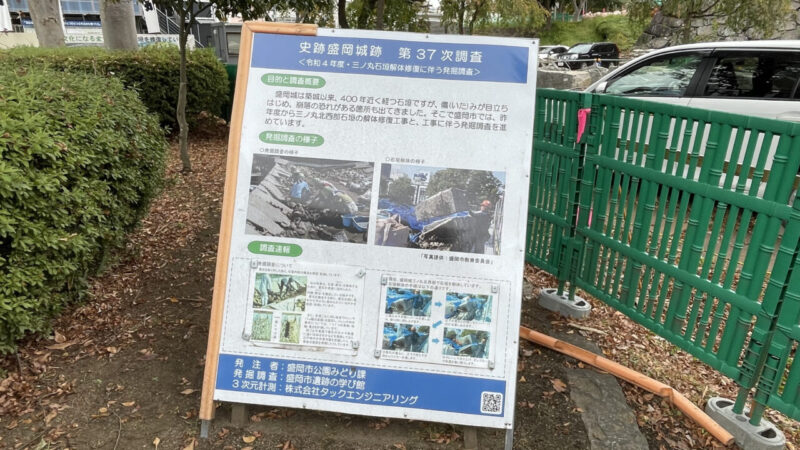
We passed by the ruins of Morioka Castle, where the stone walls are currently being restored, which was perfect timing
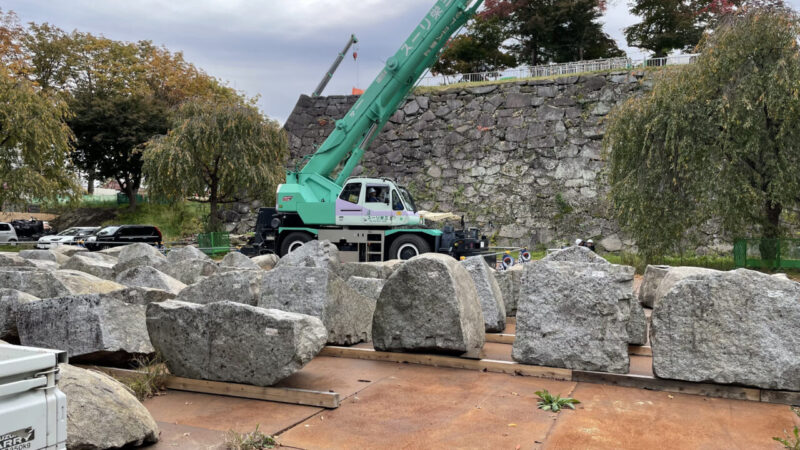
Although we were not able to touch the stone walls, it was a valuable experience to be able to see each stone wall up close
It is said that construction of Morioka Castle began in 1597 with his eldest son, Toshinao, as the chief magistrate
When I looked into the restoration of the stone walls later, I found out that the last restoration was in 1705, the second year of the Hoei era, and that this was the first restoration work in about 300 years
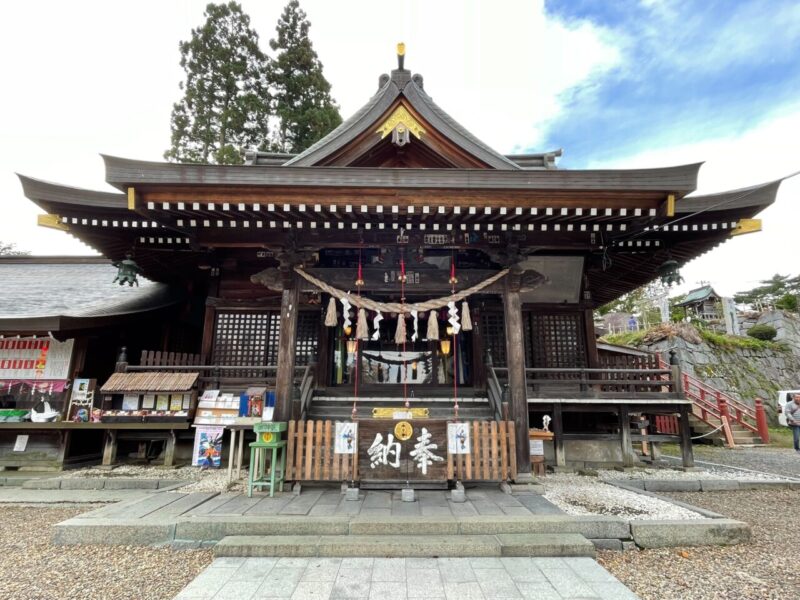
We will also stop by Sakurayama Shrine next to Morioka Castle
Sakurayama Shrine is located on the site of the Sannomaru bailey of Morioka Castle. It was founded in the second year of Kan'en in the mid-Edo period and is worshipped as the guardian deity of the Nanbu domain. The shrine houses a sword made by Kuninaga from the early Nanboku-cho period, which has been designated an Important Cultural Property of Japan

When I arrived at Sakurayama Shrine, I was surprised to see Eboshi Rock behind the shrine
According to the information board at the Sakurayama Shrine office, a large protruding rock was discovered when the ground was excavated during the construction of Morioka Castle, and since then various religious ceremonies have been held here, and the rock is still worshipped today as the "talismanic rock" of Morioka, the Nanbu domain
The huge rock is truly overwhelming. It gives you a mysterious feeling of power, so it's no wonder it's called the "lucky rock" of Morioka, the Nanbu domain
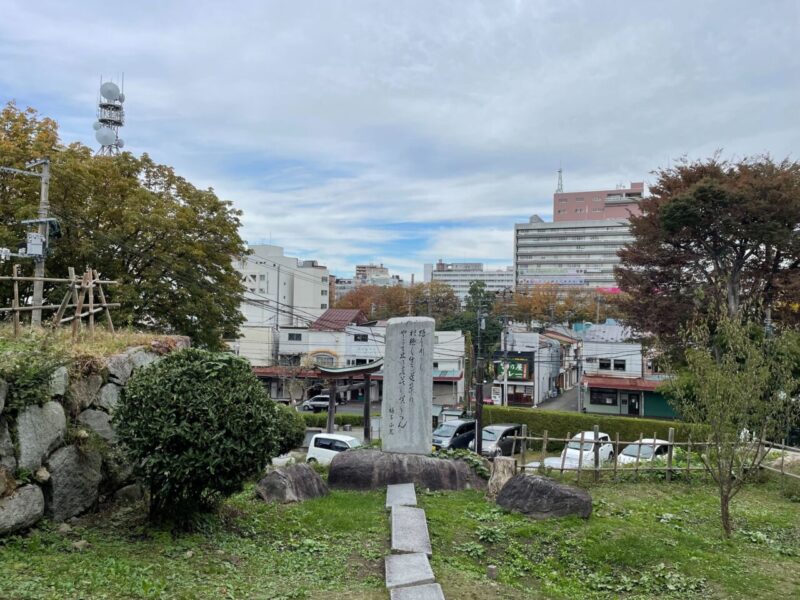
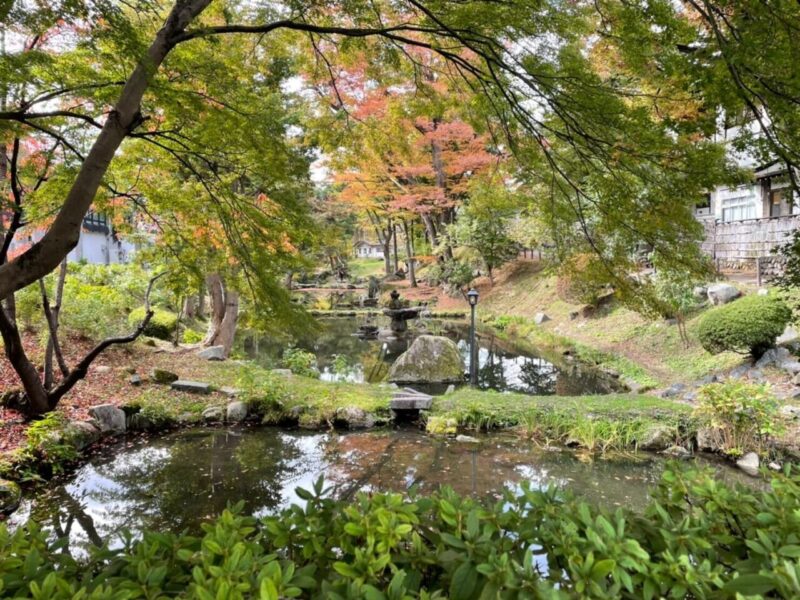
Tsurugaike Pond, located right next to Morioka Castle and Sakurayama Shrine, is a charming and comfortable place. It was a little early for the autumn leaves to change color, but it was very relaxing
Sakurayama Shrine
- Address: 1-42 Uchimaru, Morioka City, Iwate Prefecture
GOOGLE MAP
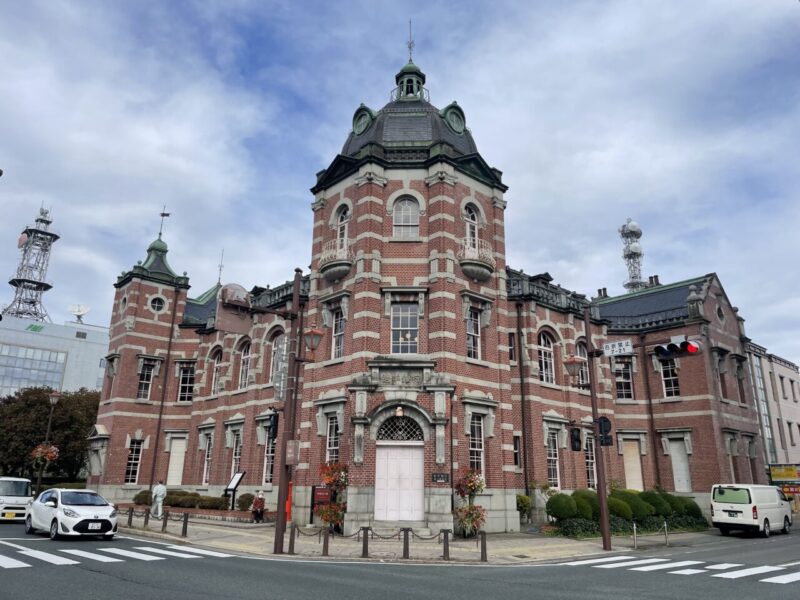
Starting from Morioka Castle and Sakurayama Shrine, we cross the Nakatsugawa River and head for the Iwate Bank Red Brick Building
The Iwate Bank Red Brick Building was completed in 1911 as the Morioka Bank Head Office, and was used as a bank for over 100 years until 2012. It is now open as a multipurpose hall and a facility that displays the interior of the building as it was when it was first built
Iwate Bank Red Brick Building
- Address: 1-2-20 Nakanohashi-dori, Morioka City, Iwate Prefecture
- Business hours: 10:00-17:00 (entry until 16:30)
- Closed: Every Tuesday, New Year's holiday (December 29th - January 3rd)
GOOGLE MAP
However, we didn't have time to visit at the moment, so we passed the Iwate Red Brick Museum and crossed the opposite traffic light
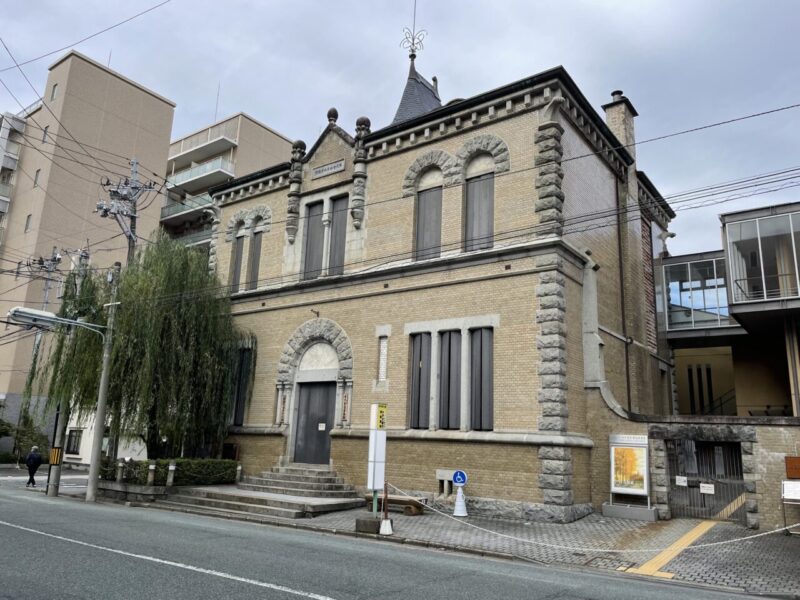
We took a stroll around the nearby Morioka Takuboku and Kenji Youth Museum (formerly the main building of the 90th Bank) and then headed back towards Morioka Station
The former 90th National Bank was established in 1878 with local funds. This building was constructed by Morioka-born architect Tsutomu Yokohama and completed in 1910
A distinctive feature of the building is its asymmetrical design around the main entrance, its gorgeous exterior with yellowish-brown decorative tiles and granite cornerstones, entrance and window arches, yet it was also built with functionality in mind, with the second floor being used as a general meeting room
Currently, it is used as a permanent exhibition room introducing Ishikawa Takuboku and Miyazawa Kenji, who spent 10 years of their youth in Morioka, and also has an exhibition hall where art exhibitions and concerts are held
There is also a coffee corner inside, so it's a good place to stop by for a break
Former 90th Bank Main Branch Main Building
- Address: Morioka Takuboku and Kenji Youth Museum, 1-1-25 Nakanohashi-dori, Morioka City, Iwate Prefecture
- Opening hours: 10:00-18:00 (last entry at 17:30)
- Closed: Second Tuesday of every month and New Year's holidays (December 29th to January 3rd)
- Coffee shop: "Coffee Akogare" in the former 90th Bank main building
- Business hours: 10:00-18:00 (last order 17:00)
- Closed: 2nd Tuesday and New Year's holidays
GOOGLE MAP
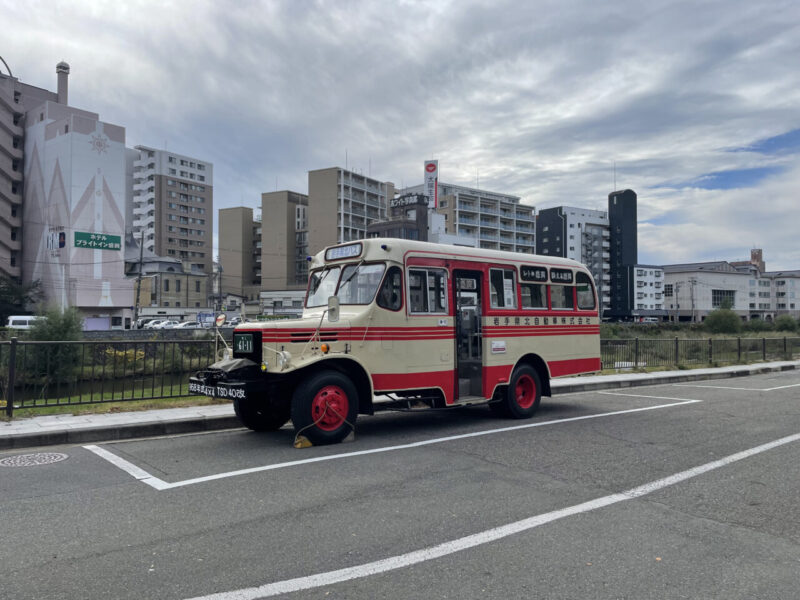
On the way back, I was happy to see a retro bus near Nakanohashi Bridge. This bus is from 1964
Currently, it only operates between Hachimantai Onsenkyo and Matsukawa Onsen during the winter, but this autumn it will connect to Morioka city and tour the hot springs!
This is a recommended means of transportation when visiting Morioka by Shinkansen or other means
We had a late breakfast here, then headed to the first Bikkuri Donkey store, "Bell Boulevard Store."
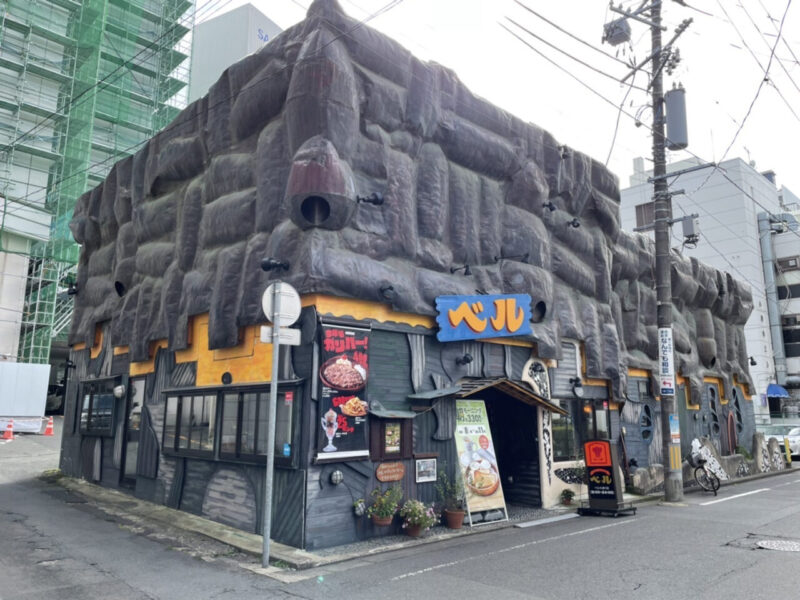
I was feeling a bit tired from all the walking around, so I decided to have breakfast here. My destination was the first Bikkuri Donkey store, "Bell Boulevard Store."
When I was a student, there were many of them in Sendai city and I thought it was a large store part of a national chain in Tokyo, but that's not the case.The first store was originally "Bell" in Morioka, and the store originated in Iwate
This is a long-established restaurant with a long history, having been founded in 1968 (Showa 43) when it first opened as "Bell, a hamburger and salad restaurant."
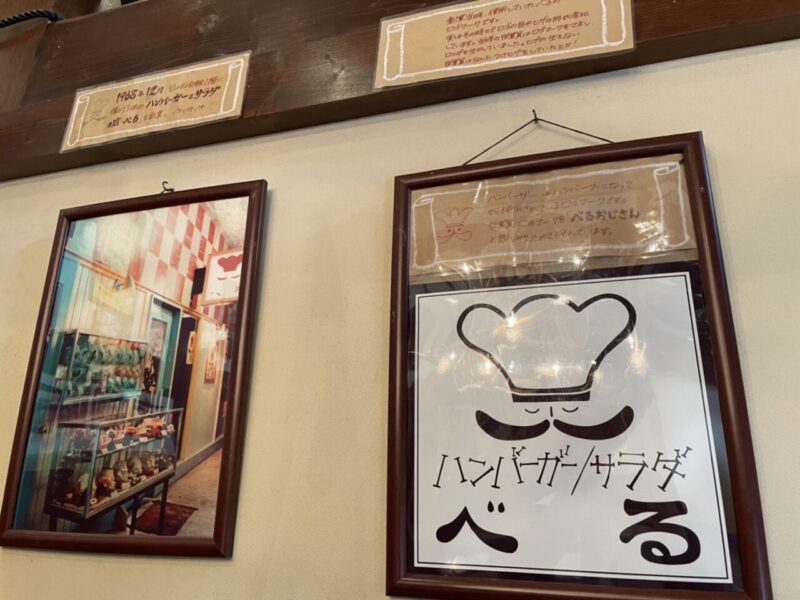
The name "Bell" was apparently chosen by the company's founder, the late President Akio Shoji, who was inspired by the percussion instrument "cowbell." It seems that Mr. Shoji had once aspired to be a professional musician
At Bell, I had the morning hamburger steak set for breakfast
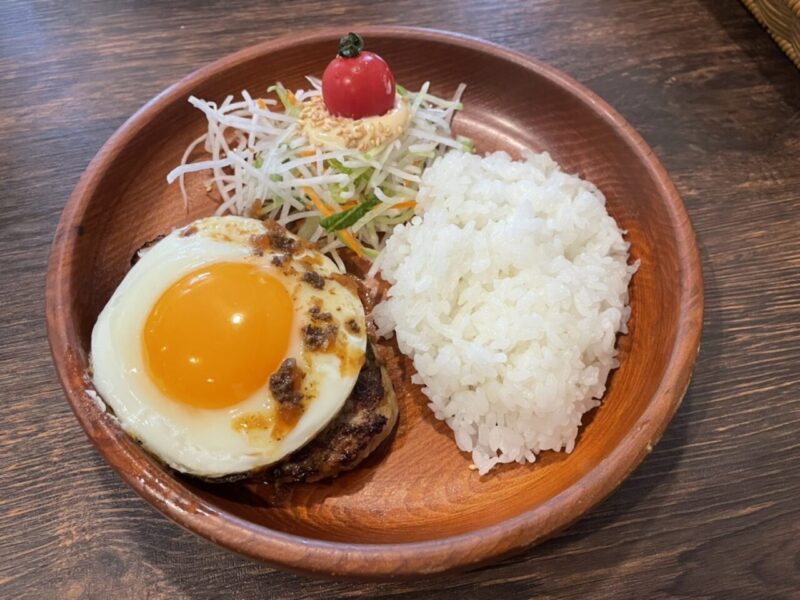
Looking at the menu list, it doesn't seem to be any different from other Bikkuri Donkey stores
If there's anything unusual, it's inside the store
I haven't been to every Bikkuri Donkey restaurant in the country, but it's rare to find seats on the second floor
Hamburger Bell Odori Branch
- Address: 1-4-7 Odori, Morioka City, Iwate Prefecture
- Business hours: 9:00-24:00 (last orders 23:30)
- Closed: Open daily
GOOGLE MAP
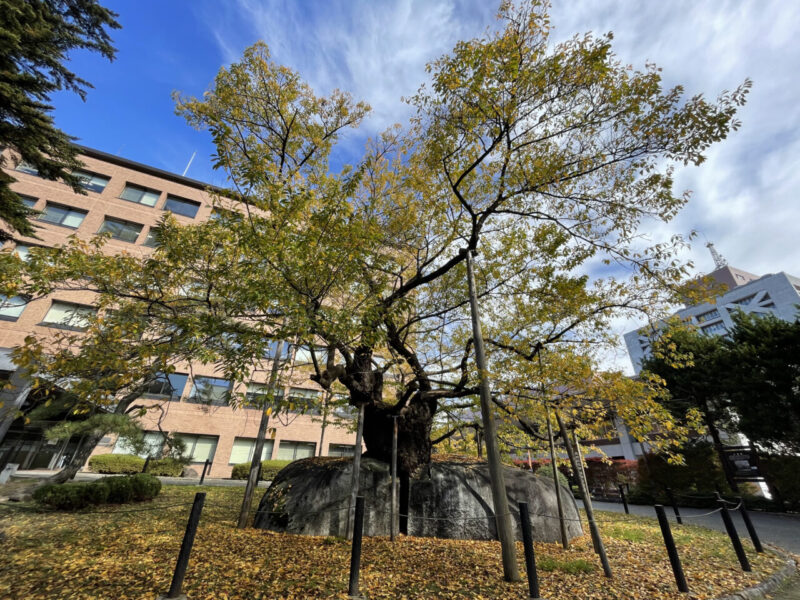
Ishiwari Sakura is located on the grounds of the Morioka District Court
It was designated a national natural monument in 1923 (Taisho 12) and is currently the site of a district court, but it is said to have originally been the garden of the Kitakanmono family, a branch of the Nanbu feudal lord, around the Kan'ei era, and in the early Meiji period it was called Ounseki
There is also a legend that a huge rock in the garden of the chief retainer's residence was struck by lightning, creating a crack, into which a cherry blossom seed called Edohiganzakura entered and grew
It seems like you're free to enter, but there is a security guard near the entrance, so it might be a good idea to ask for permission to enter
Ishiwarizakura
- Location: 9-1 Uchimaru, Morioka City, Iwate Prefecture (inside Morioka District Court)
GOOGLE MAP
A trip on the Komachi Shinkansen from Morioka to Akita City
I look at my watch and it's 11:00 a.m. as I leave Morioka and head towards Akita on the Komachi train
Looking at the timetable, I saw that there was an Akita Shinkansen bound for Kakunodate departing at 11:23, so I headed straight for Kakunodate
I have been to Kakunodate by car before, but this is my first time going there by train
Arriving in Kakunodate, we took a stroll within a 3km radius of Kakunodate Station
It was 12:20 and I took the Akita Shinkansen from Morioka Station, but the ride was about an hour, right?

Kakunodate Station has been selected as one of the 100 best stations in Tohoku
This was my first time getting off at this station, and I was really surprised at how beautiful it is
It's clear that this station is well-loved by both the station staff and the locals. It's also the terminal station of the Akita Jukan Railway
The Samurai Residence Street is 1.2km from Kakunodate Station, so I think it's closer than other stations
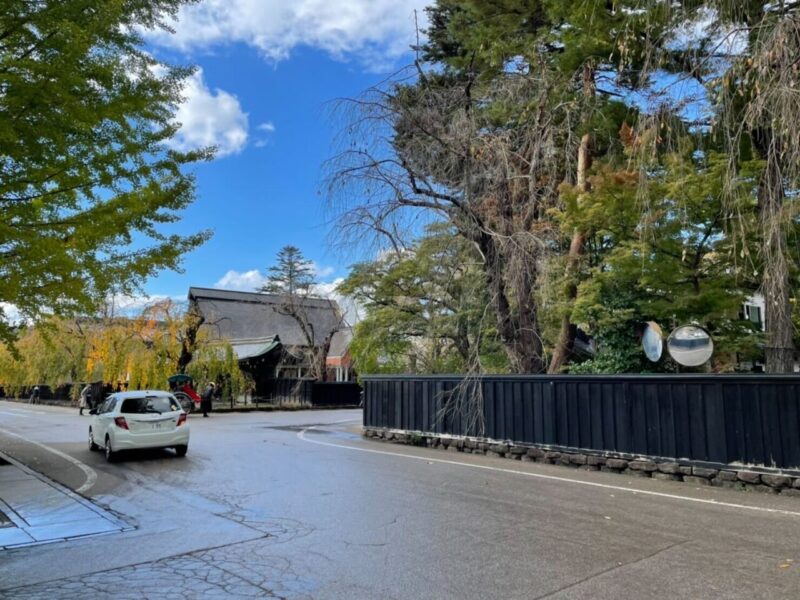
Samurai Residence Street is a road in Kakunodate Town, Senboku City, Akita Prefecture. It stretches south from the foot of Mount Furushiro and runs north-south through Uchimachi, a former samurai town in Kakunodate
The famous weeping cherry tree seen along Samurai Residence Street is said to have been brought from her birthplace in Kyoto by the wife of Satake Yoshiaki, son of Satake Yoshichika, and was designated a national natural monument in 1974
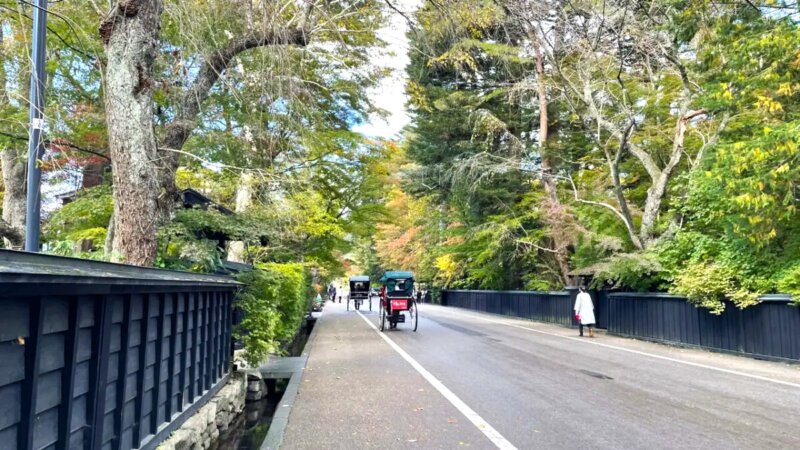
The roads along Samurai Residence Street are now paved with asphalt, making it easier to walk, but the width of the roads and the ditches running in front of the houses still remain unchanged from the past
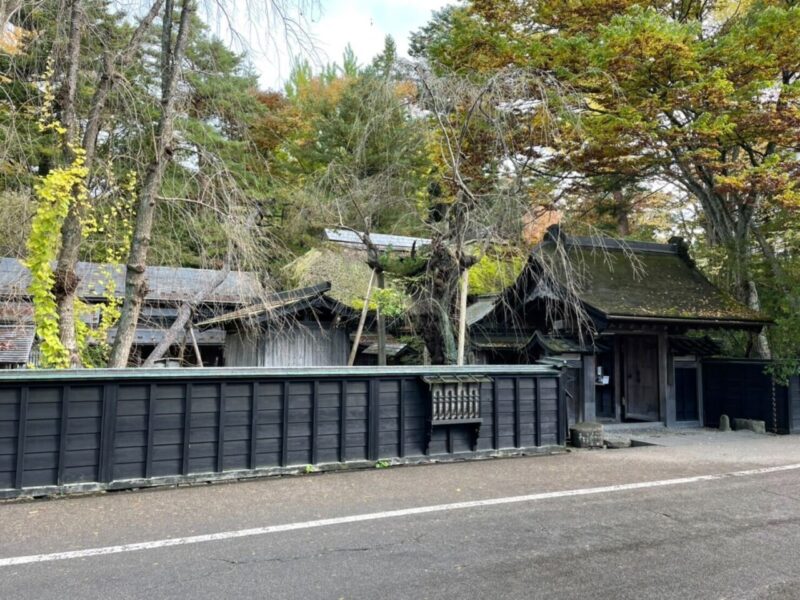
The Aoyagi family originally served the Ashina clan, but after the Ashina clan died out, they became vassals of the Satake clan, just as they had been in the Mito period. From then until the Meiji era, they served as loyal vassals of the Satake clan, and continued to support the prosperity of their lord
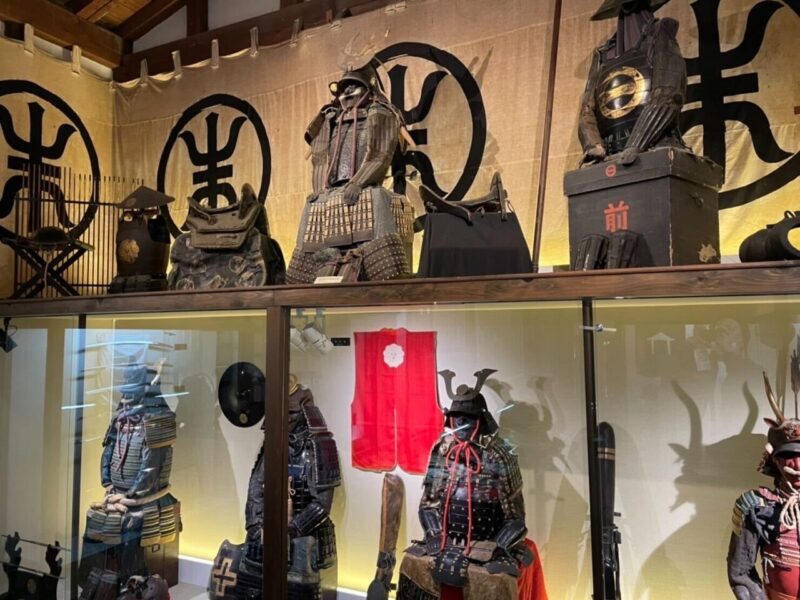
The Aoyagi family's grounds are 10,000 square meters in size, and in addition to the main house, there are six museums on the grounds, including an armory and the Kaitai Shinsho Memorial Museum, and there are also sword exhibits and local cultural experiences available
Incidentally, Odano Naotake, who is famous for his illustrations in Akita Dutch Studies and Kaitai Shinsho, was related by marriage to the Aoyagi family, and there were many adoptions and marriages between the two families
The Kaitai Shinsho Memorial Museum exhibits information about Odano Naotake, who had a close relationship with the Aoyagi family, Kaitai Shinsho, and his artistic career
Kakunodate Historical Village, Aoyagi House
- Address: 3 Omotemachi Shimocho, Kakunodate-cho, Senboku-shi, Akita Prefecture
- Opening hours: 9am to 5pm (until 4pm from November to March)
- Admission fee: Adults (high school students and above) 500 yen; high school and junior high school students 300 yen; children 200 yen
GOOGLE MAP
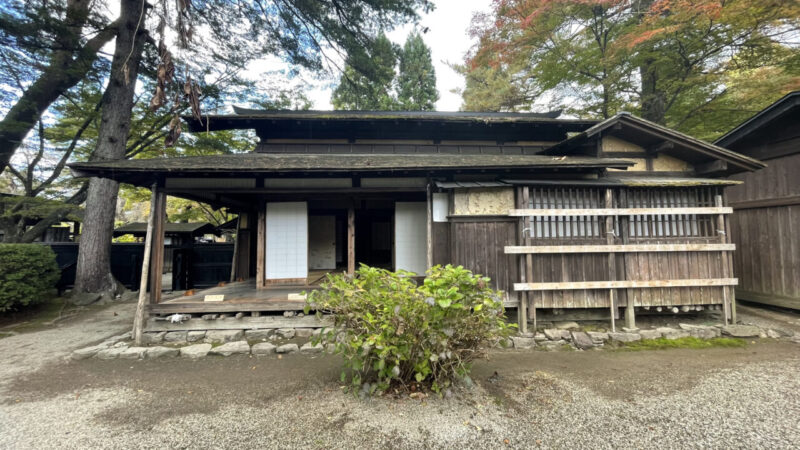
The Kawarada family was a samurai family that moved from Aizu to Kakunodate as subordinates of the Ashina clan, who had been the castle lords before the Satake clan took over. Like the Odano family, the current main house was built in the Meiji period
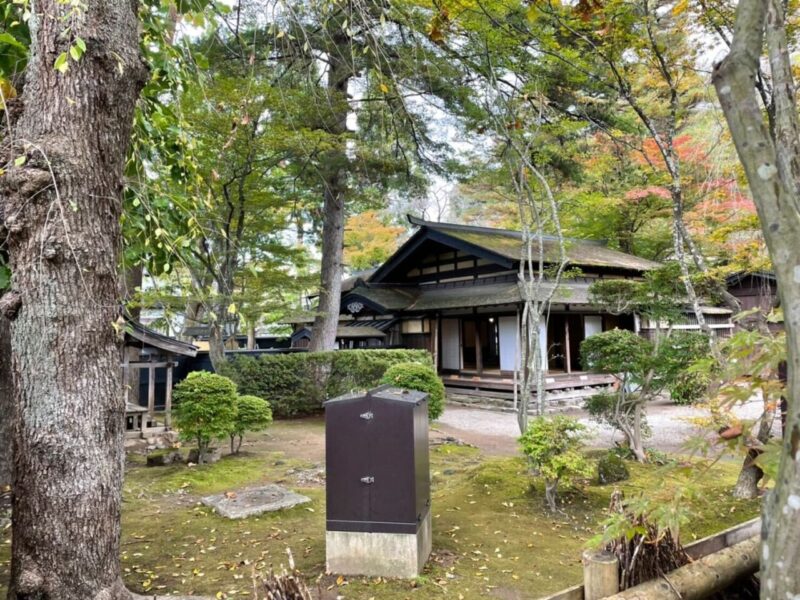
The Kawarada residence is located at the entrance to Samurai Residence Street and is adjacent to the Onoda residence. Both buildings are public samurai residences designated as historic sites by Senboku City
Kawarada family
- Address: 9 Higashikorakucho, Kakunodate-cho, Senboku-shi, Akita Prefecture
- Business hours: 9:00-17:00 (entry until 16:30)
- Closed: New Year's holiday (12/28 - 1/4)
- Admission fee: Adults (high school students and above) 300 yen, Children (elementary and junior high school students) 150 yen
GOOGLE MAP
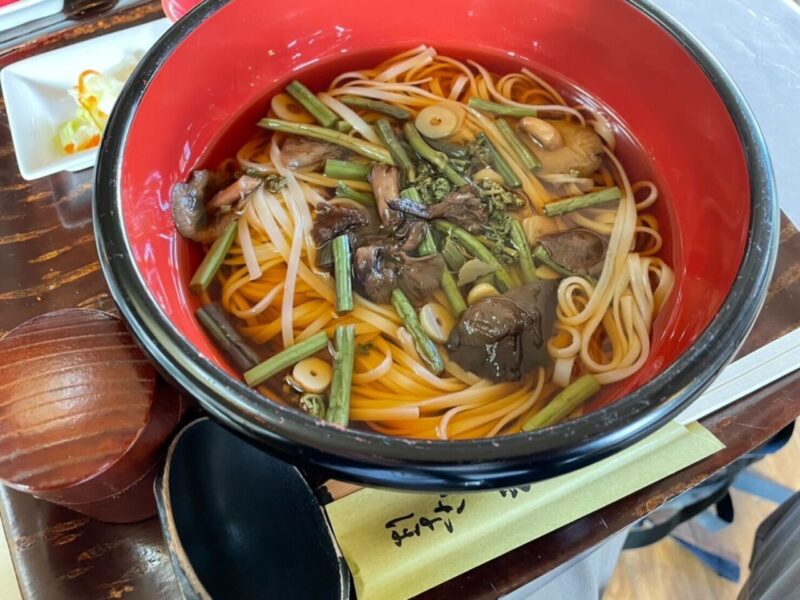
As I left Kakunodate Samurai Residence Street and headed towards the station, I hadn't had lunch yet, so I decided to have lunch at Inaho, which I found on my way back to the station
At "Inaho," I ordered cold Inaniwa udon noodles with wild vegetables, and was very satisfied to be able to enjoy local dishes such as "Iburi-gakko" as a side dish!
The Inaniwa udon was also really delicious and soothed my tired body. It's a recommended restaurant, so if you're going to Kakunodate, be sure to stop by
Inaho Restaurant
- Address: 4-1 Kamicho, Kakunodate-machi, Senboku-shi, Akita Prefecture
- Business hours: 11:00am - 2:30pm
GOOGLE MAP
Departing from Kakunodate, we head to our destination, Akita City!
After this, we will finally head to Akita City, the goal of the first day. We will arrive in Akita City early and take a walk around the city center
I haven't been to Akita City since about 10 years ago for a friend's wedding, but this time I went back for a different reason.I'll be writing about historical walks, delicious food and drinks, and things I can introduce from my perspective, so please join me next time
Travel expenses for this trip (in the case of standard fares)
Celebrating JR East's 150th anniversary, free pass ticket 22,150 yen
| traffic section | train | fare | Ride time |
| Between Sendai Station and Morioka Station | Hayabusa | 6,790 yen | 39 minutes |
| Morioka Station - Kakunodate Station | Komachi | 2,830 yen | 55 minutes |
| Day 1 first part total | 9,620 yen | 94 minutes |





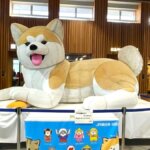




![[JR East Pass Trip: Day 3] A day trip to Aomori Bullet Tour to foster your energy at home! Tsugaru Kokeshi at Shin-Aomori Station](https://jp.neft.asia/wp-content/uploads/2022/12/IMG_3878-1200x675-1-150x150.jpg)
![[JR East Pass Trip: Day 2 Part 1] I'm already turning back to Iwate. Our goal is Hiraizumi, a town of history! Shinkansen platform near Akita Station](https://jp.neft.asia/wp-content/uploads/2022/12/IMG_3940-1200x900-1-150x150.jpg)
![[JR East Pass Trip: Part 2 of Day 1] Strolling around Akita City on the first day, delicious local sake and local cuisine! Giant Akita dog at Akita Station](https://jp.neft.asia/wp-content/uploads/2022/11/IMG_3762-1200x675-1-150x150.jpg)
![[JR East Pass Trip: Explanation - Preparation Edition] I'm off! Commemorating the 150th anniversary of the opening of the railway! JR East Pass 150th anniversary of the opening of the railway](https://jp.neft.asia/wp-content/uploads/2022/10/150jrpass_logo_0422a_float-1200x796-1-150x150.jpg)
![[JR East Pass Trip: Part 2 of Day 2] After seeing Mokoshiji Temple, the remains of the soldiers' dreams, we returned to Sendai temporarily! Pure Land Garden at Mokoshiji Temple](https://jp.neft.asia/wp-content/uploads/2022/12/IMG_3853-1200x675-1-150x150.jpg)
![[JR East Pass Trip: Day 2 Part 2] Intensive exploration of Hiraizumi! World Heritage Sites: Chusonji Temple and Kinjido Chusonji Temple Information Board](https://jp.neft.asia/wp-content/uploads/2022/12/IMG_3829-1200x675-1-150x150.jpg)
![[Iwate Prefecture] Soft-serve ice cream with sake, miso and wasabi flavor! Why are the soft serve ice cream eaten at roadside stations so delicious? There's also school lunches! Iwate Prefecture Catch](https://jp.neft.asia/wp-content/uploads/2025/06/915fd0ce722ab0f21e74864401170847-150x150.jpg)
![[Yamagata Prefecture] Let's go try the delicious, locally produced soft serve ice cream at Yamagata's roadside station! Yamagata Catch](https://jp.neft.asia/wp-content/uploads/2025/07/2c2e7024e6ed08990103582514a5844e-150x150.jpg)
